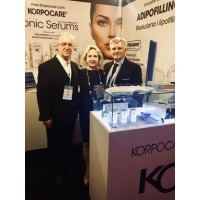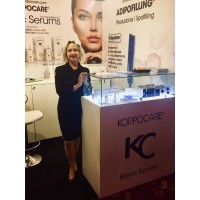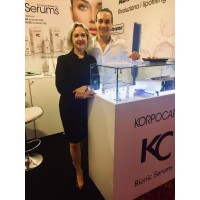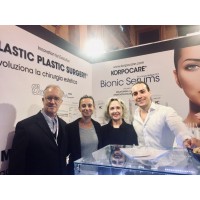10 INGREDIENTI TOSSICI DA EVITARE, UTILIZZATI NEI PRODOTTI DI BELLEZZA
If you thought the FDA does a subpar job in regulating what goes into our food supply, you’ll be equally appalled, if not more, on its regulation of cosmetic and personal care products. The same way you look at food labels, you should do the same for your beauty products.
There are thousands of chemicals in your products, many of which are being absorbed into your body. These companies have cart blanche to use any ingredient or raw material without government review or approval.
This industry is highly unregulated. There is no pre-product approval before a product hits the market and enters your home. A minuscule approval process exists, but only for color additives and ingredients classified as over the counter drugs.
Many of these synthetic chemicals are skin irritants, skin penetrators, endocrine disrupters and are carcinogenic. I can’t go through all of these harmful chemicals, but here are 10 you should highly avoid.
Parabens
Parabens are widely used preservatives that prevent the growth of bacteria, mold and yeast in cosmetic products. Sounds good, right? Not so fast, they do more than that. Parabens possess estrogen mimicking properties that are associated with increased risk of breast cancer. These chemicals are absorbed through the skin and have been identified in biopsy samples from breast tumors. They can be found in makeup, body washes, deodorants, shampoos and facial cleansers. You can also find them in food and pharmaceutical products.
Synthetic colors
If you take a look at your product label and notice FD&C or D&C, they represent artificial colors. F representing food and D&C representing drug and cosmetics. These letters precede a color and number (e.g., D&C Red 27 or FD&C blue 1). These synthetic colors are derived from petroleum or coal tar sources. Synthetic colors are suspected to be a human carcinogen, a skin irritant and are linked to ADHD in children. The European Classification and Labeling considers it a human carcinogen and the European Union has banned it.
Fragrance
This particular category is pretty scary, because what does “fragrance” mean anyway? This term was created to protect a company’s “secret formula”. But as the consumer you could be putting on a concoction that contains tons of chemicals that are hazardous to your health. According to the Environmental Working Group (EWG) Skin Deep Database, fragrance mixes have been associated with allergies, dermatitis, respiratory distress and potential effects on the reproductive system. It can be found in many products such as perfume, cologne, conditioner, shampoo, body wash and moisturizers.
Phthalates
A group of chemicals used in hundreds of products to increase the flexibility and softness of plastics. The main phthalates in cosmetics and personal care products are dibutyl phthalate in nail polish, diethyl phthalate in perfumes and lotions, and dimethyl phthalate in hair spray. They are known to be endocrine disruptors and have been linked to increased risk of breast cancer, early breast development in girls, and reproductive birth defects in males and females. Unfortunately, it is not disclosed on every product as it’s added to fragrances (remember the “secret formula” not listed), a major loophole in the law. They can be found in deodorants, perfumes/colognes, hair sprays and moisturizers.
Triclosan
Tricolson is widely used antimicrobial chemical that’s a known endocrine disruptor, especially thyroid and reproductive hormones, and a skin irritant. Studies raise concerns that triclosan contributes to making bacteria antibiotic resistant. There also wasn’t enough supporting evidence that washing with antibacterial soaps containing triclosan provides any benefit over washing with regular soap and water. Tricolson can be found in toothpastes, antibacterial soaps and deodorants.
Sodium lauryl sulfate (SLS) / Sodium laureth sulfate (SLES)
This surfactant can be found in more than 90 percent of personal care and cleaning products (think foaming products). SLS’s are known to be skin, lung, and eye irritants. A major concern about SLS is its potential to interact and combine with other chemicals to form nitrosamines, a carcinogen. These combinations can lead to a host of other issues like kidney and respiratory damage. They can be found in shampoo, body wash/cleanser, mascara and acne treatment.
Formaldehyde
Formaldehyde and formaldehyde releasing preservatives (FRP’s) preservatives are used in many cosmetic products to help prevent bacteria growth. This chemical was deemed as a human carcinogen by The International Agency for Research on Carcinogens (IARC) and has been linked to occupational related cancers: nasal and nasopharyngeal. It is known to cause allergic skin reactions and it may also be harmful to the immune system. It can be found in nail polish, body washes, conditioners, shampoos, cleansers, eye shadows, nail polish treatments.
Toluene
A petrochemical derived from petroleum or coal tar sources. You may see it on labels listed as benzene, toluol, phenylmethane, methylbenzene. Toluene is a potent solvent able to dissolve paint and paint thinner. It can affect your respiratory system, cause nausea and irritate your skin. Expecting mothers should avoid exposure to toluene vapors as it may cause developmental damage in the fetus. Toluene has also been linked to immune system toxicity. It can be found in nail polish, nail treatments and hair color/bleaching products.
Propylene glycol
Propylene glycol is a small organic alcohol commonly used as a skin conditioning agent. It’s classified as a skin irritant and penetrator. It has been associated with causing dermatitis as well as hives in humans, these sensitization effects can be manifested at propylene glycol concentrations as low as 2 percent. It can be found in moisturizers, sunscreen, makeup products, conditioners, shampoo and hair sprays.
Sunscreen chemicals
These chemicals function as a sunscreen agent, to absorb ultraviolet light. These chemicals are endocrine disruptors and are believed to be easily absorbed into the body. They may also cause cellular damage and cancer in the body. Common names are benzophenone, PABA, avobenzone, homosalate and ethoxycinnmate. They can be found in sunscreen products.
It’s impossible to avoid every single synthetic chemical, but you can do your part in limiting the amount of toxins your body is exposed to. Be sure to: eat clean, avoid chemical laden processed foods, drink plenty of filtered water and look for products that are certified organic if you want to avoid these toxic chemicals.
Educate yourself and do your research before you buy. Think of something you absolutely love, and the time and energy you apply to it. Use the same, when it comes to your health. You have one life to live and one body. If you don’t take care of yourself, you may pay for it later in sickness.
Be sure to check out the EWG’s Skin Deep Database to research toxic chemicals that could be in your cosmetic and personal care products.
I would love to hear from you. Do you check your beauty product labels?
Will you commit to limiting your exposure to these toxic chemicals?
10 Toxic Beauty Ingredients to Avoid - Vanessa Cunningham - Jan 23, 2014





.jpeg)
